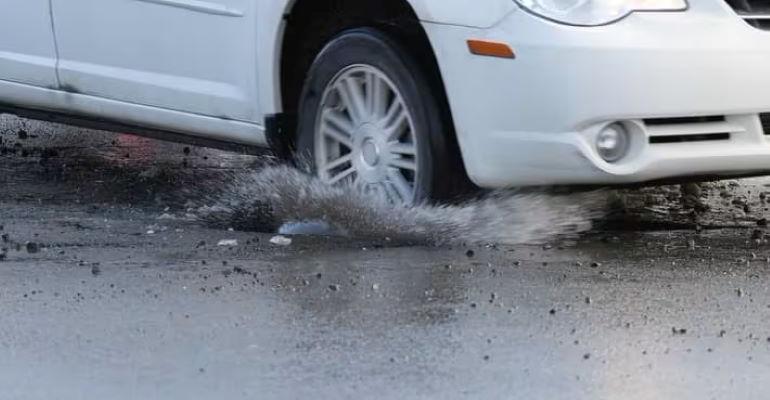Plenty of arguments are being voiced against battery-electric vehicles. Some argue that proliferating BEVs will not reduce global warming. Others cite the lack of charging infrastructure. Now, a comparatively new argument against EVs is developing: They will cause more road wear and potholes.
BEVs, it is being argued, damage roads over time at twice the rate of internal-combustion-engine vehicles. U.K.-based newspaper the Telegraph reports that residential roads, which are not engineered for heavy vehicles will develop a greater number of potholes owing to the weight of BEVs relative to ICE vehicles.
The U.K. saw BEV numbers rise to 900,000 at the end of 2022. The British government has issued a ban on ICE vehicles by 2030.
Using data and technical assistance from the University of Leeds, the Telegraph reports that the average electric car puts 2.24 times more stress on roads than its gasoline ICE equivalent, and 1.95 times more than diesel. Larger BEVs weighing over 2,000 kg (4,409 lbs.) cause the most damage, with 2.32 times more wear applied to roads.
Stress on road surfaces causes greater movement of asphalt, which creates small cracks. If these are not fixed, then they expand with changing temperatures, ice, snow and road salting and develop into potholes.
The university research group recorded data from 15 popular BEV models, all weighing more than 1,000 kg (2,205 lbs.) and ranging up to 2,268 kg (5,000 lbs.): Mini Cooper SE; Peugeot e208; Ford Focus Electric and Vauxhall Corsa-e, and larger vehicles including the Jaguar I- Pace EV and Audi e-tron 50 Quattro.
The report states that the BEVs weighed an average 312 kg (688 lbs.) more than similar gasoline and diesel versions. This is because of the weight of the batteries, which can weigh up to 500 kg (1,102 lbs.)
The analysis by the Telegraph and the Leeds team uses the “fourth power formula,” widely used by civil engineers and researchers to assess damage caused to road surfaces by heavier vehicles such as heavy trucks. The formula states that if the weight on a vehicle’s axle is doubled, it does 16 times the damage to the road.
The impact of a greater and growing fleet of BEVs won’t be felt on highways and main roads because they are engineered to support semi-trucks. But rural and residential roads where heavier BEVS will be driven will show excessive wear and pressure over time. Separate research from the University of Edinburgh found that the roll-out of electric trucks could increase the damage to roads in Scotland by almost a third.
There is no reason to expect that a similar issue won’t surface in the U.S. For example, the battery-electric Ford F-150 Lightning weighs more than 6,500 lbs. (2,948 kg), 35% more than the gas-powered F-150. The GMC Hummer BEV pickup bulks out at 9,063 lbs. (4,111 kg).
Because BEV owners don’t pay gas taxes, one of the tax schemes under debate is taxation by weight, or by battery weight. Norway, which has an advanced EV and hydrogen economy, taxes vehicles by weight at a rate of about $1.26 per kilogram, which means most EVs in the Scandinavian country are taxed at about $1,500 to $3,000.
The concern is not just for residential roads, but also driveways and garage floors, which are not subject to national standards, with even local standards not enforced very much. In other words, don’t be surprised if your GMC Hummer BEV cracks your driveway. There’s also the potential risk of damage to public parking garages designed for lighter-weight vehicles.
Besides the concern over everyday BEV commuter vehicles, there is also the issue of car haulers and operating them at peak efficiency. For these large trucks, designed to carry five to nine vehicles at once from manufacturing plants, ports and cargo train depots, there is an 80,000-lb. (36,287-kg) weight limit that auto manufacturers would like to see increased to accommodate BEVs.
When it comes to infrastructure to support BEVs, most of the talk is about public chargers. But the public roads will get their hearing too, as the percentage of vehicles sold with weighty batteries rises.





